Their names have long become household names. Any Moscow taxi driver will take you to the place, tell him only one word: "Sklif", "Botkinskaya", "Filatovskaya". "Motherland" presents outstanding doctors whose names are included in the legends and names of hospitals and hospitals
The Magnanimous Seven
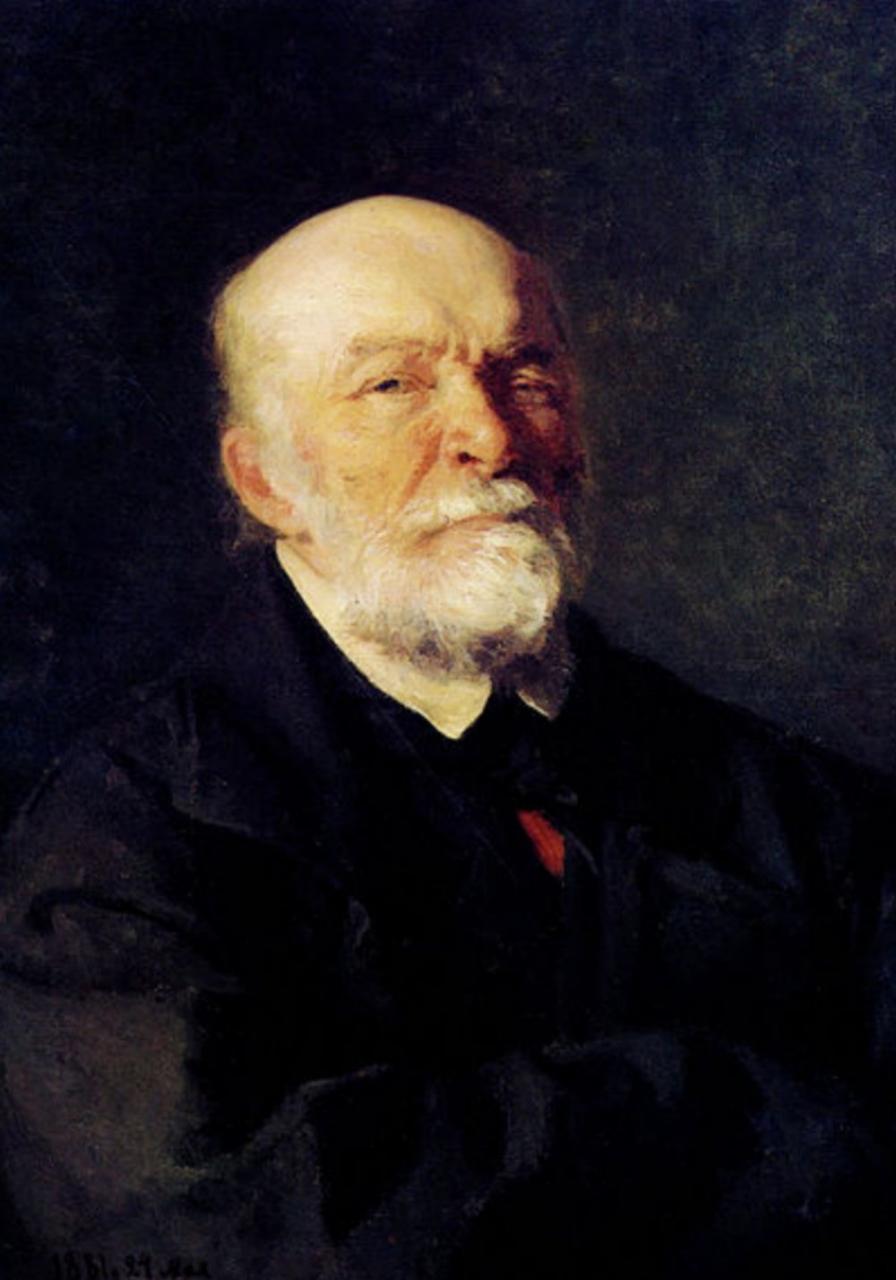
Born in the family of a Moscow military quartermaster. In 1823, at the age of fourteen, attributing two years to himself, he entered the medical faculty of Moscow University, after which, among the five best of his graduates, he was sent to the newly opened Professorial Institute at Derpt University by order of Emperor Nicholas I.
In 1833 he brilliantly defended his doctoral dissertation.
Career
After an internship abroad, the 26-year-old doctor was elected professor of theoretical and practical surgery at the medical faculty of the Imperial Derpt University. From 1841 to 1856, Pirogov headed the Department of Surgery of the Moscow Medical and Surgical Academy, he created a hospital surgery clinic and the first anatomical institute in Russia; consulted in the five largest St. Petersburg hospitals, published works on anatomy and surgery, traveled to the theaters of the Caucasian and Crimean wars, where he established the organization of military field surgery and operated a lot himself.
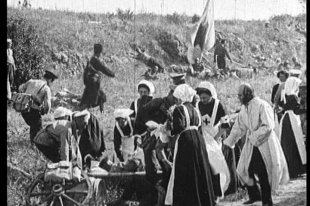
Being the chief surgeon in the besieged Sevastopol, he sharply criticized the command, because of which he fell out of favor. After the end of the war, he resigned and, carried away by issues of pedagogy, took the position of trustee, first of the Odessa and then of the Kiev educational districts, supervised Russian doctoral students abroad. Since 1866, he settled on an estate near Vinnitsa, where he opened a free clinic, went to lecture and, by invitation, operated on the fronts of the Franco-Prussian and Russian-Turkish wars.
In 1881, shortly before his death, Privy Councilor N. I. Pirogov became the fifth honorary citizen of Moscow.
Achievements
Founder of topographic anatomy, vascular surgery, military field surgeon
He was the first to use ether anesthesia and a plaster cast in the field, introduced medical triage with the determination of the severity of injuries and the order of care.
Under his leadership, the work of nurses began to be used at the front for the first time.
Portrait
“Pirogov sat hopelessly here, in the other corner of the room, at the green table, silent and thoughtful. He always wore the same soldier’s overcoat wide open, from under which a long red sweatshirt peeked out. A cap was on his head. It seemed that he was sitting indifferently, like a stranger, but meanwhile he heard and saw everything. Occasionally he got up and approached the table, took a surgical knife – and inspired, the only cuts amazed the physicians around him.Берг, участник обороны Севастополя.
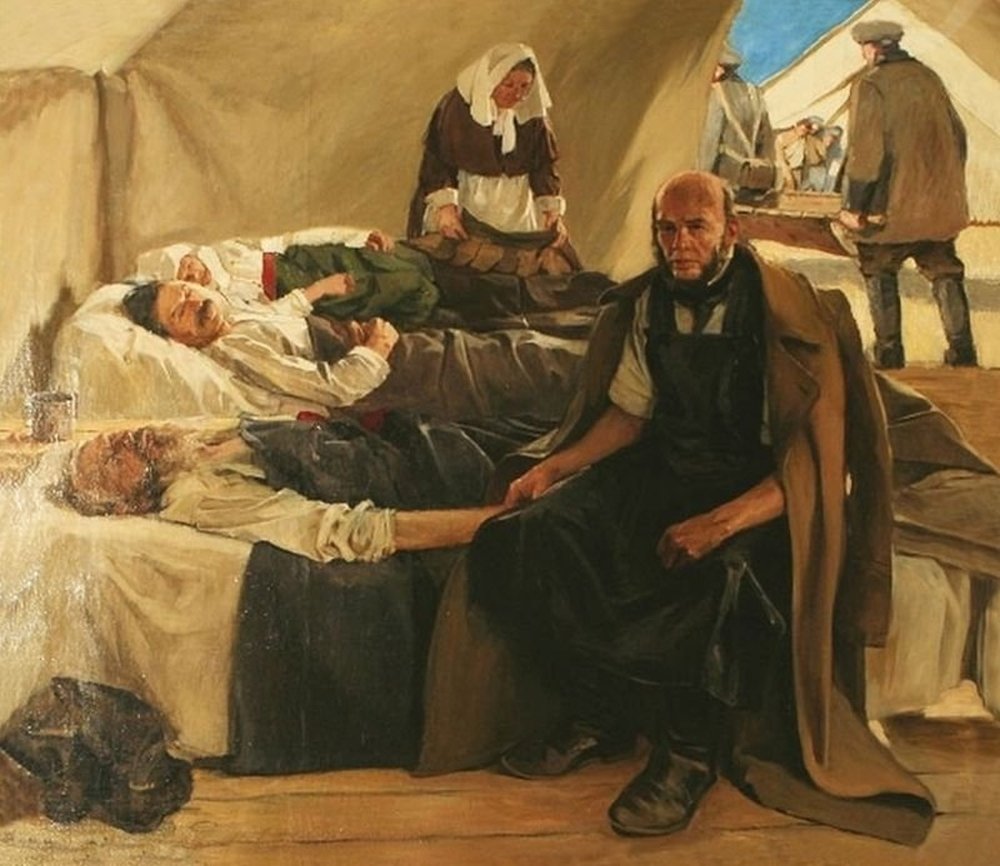
Detail
Пирогов консультировал Отто фон Бисмарка и оперировал Джузеппе Гарибальди
Memory
Знаменитая московская "Пироговка" – городская клиническая больница N1 им. Н. И. Пирогова – образовалась в середине XIX века в результате слияния Голицынской больницы для бедных (1802), Первой градской (1833) и Второй градской больниц (1866), став одной из крупнейших больниц Европы. Ее первым главным врачом был профессор Московского университета Е.О. Мухин, учитель и покровитель Н.И. Pirogov. Роскошный Голицынский корпус, построенный по проектам В.И. Баженова, М.Ф. Казакова, помнит нашествие Наполеона: здесь главный хирург французской армии Доминик Жан Ларрей оперировал будущего министра просвещения Авраама Сергеевича Норова.
В 1832 году в здании была открыта первая в империи школа фельдшеров. А Первая градская, возведенная О.И. Бове по соседству, стала первой в стране больницей, построенной и содержавшейся за счет городского бюджета. Лечили там "безденежно, кроме достаток имеющих".
В 1959 году объединенная больница получила имя самого известного русского врача.
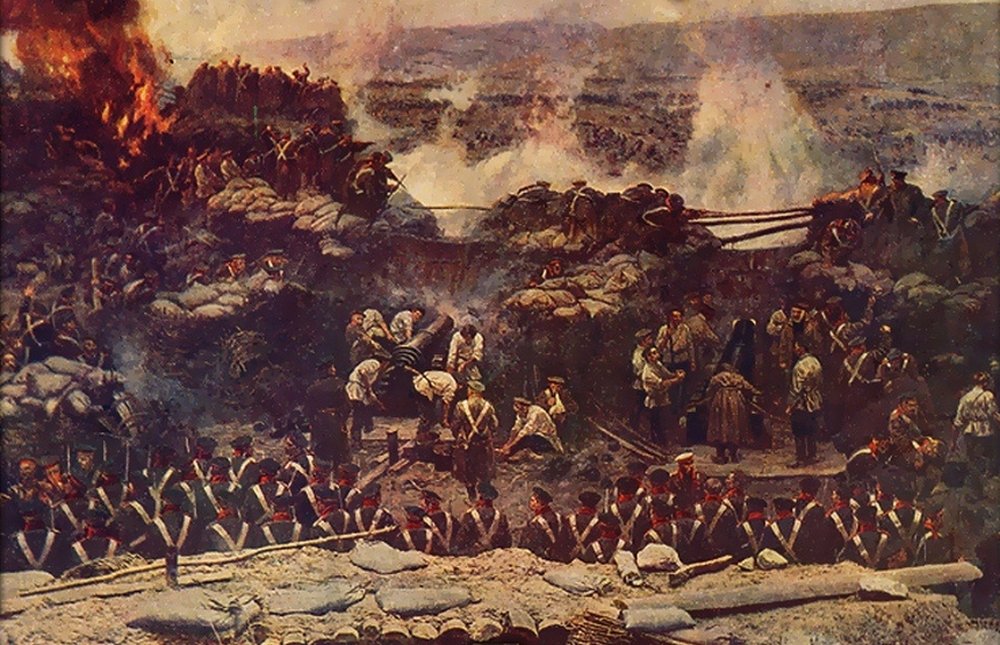
Мое искреннейшее желание, чтобы мои ученики относились ко мне с критикой; моя цель будет достигнута только тогда, когда они убедятся в том, что я действую последовательно; действую ли я правильно? – это другое дело; это смогут показать лишь время и опыт.
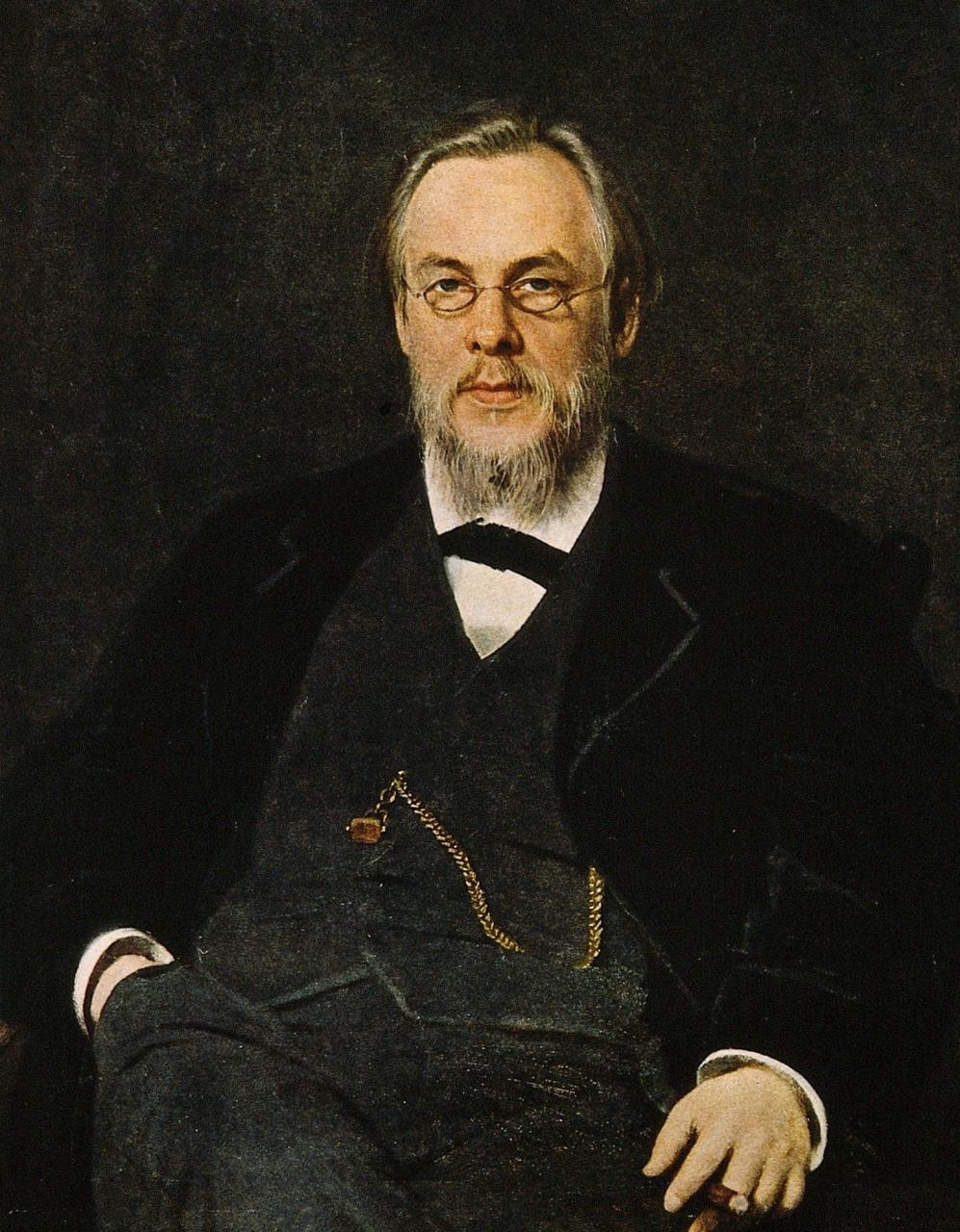
Сергей Петрович БОТКИН
Years of life: 1832-1889
Медицинская специальность: therapy
Studies
Стал 11-м ребенком от второго брака отца, преуспевающего торговца чаем. Дом Боткиных был облюбован московской интеллигенцией, здесь бывали Герцен, Станкевич, Белинский, Грановский. В одном из писем Тимофей Грановский хвалил будущего ученого: "Я следил за развитием Сергея и видел в нем выдающиеся способности. Он поражал Белинского и меня своей огромной любознательностью".
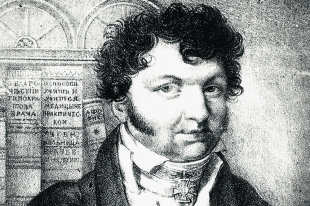
В 1855 году Сергей окончил медицинский факультет Московского университета, сдав экзамены сразу на докторскую степень, минуя лекарскую. Сразу после экзаменов отправился на Крымскую войну, где работал в санитарном отряде под руководством Николая Пирогова. После возвращения с войны почти пять лет обучался в Европе у лучших врачей Германии и Франции.
Career
В 1860 году Боткин был назначен ординарным профессором в Петербургской медико-хирургической академии. С 1863 года вел прием на дому и частную практику. "Не только добросовестная точность и напряженная внимательность, с какими он исследовал каждого, но и его приветливая внешность, сквозь которую ярко просвечивала необыкновенная человечность, искреннее сочувствие страждущему и еще более искреннее желание помочь ему делали из него идеального врача, производившего на всех обращавшихся к нему зачаровывающее впечатление и убежденность, что если возможно исцеление от серьезного недуга, то только при содействии Боткина", – писал его друг Н.А. Белоголовый.Therefore, even patients in the provinces, who had never personally contacted him, took medicine according to prescriptions that Sergei Petrovich wrote out for their friends. These medicines even began to be called in a special way: "Botkin's" drops, "Botkin's" powder, "Botkin's" pills. At one time, kvass made from crackers, once recommended by him and known under the name "Botkinsky", was in great demand.
Sergei Petrovich devoted almost 30 years to teaching. In the winter of 1872, he became the personal physician of Empress Maria Alexandrovna and received the title of life physician. In 1886 he was elected "honorary trustee of all city hospitals and almshouses."
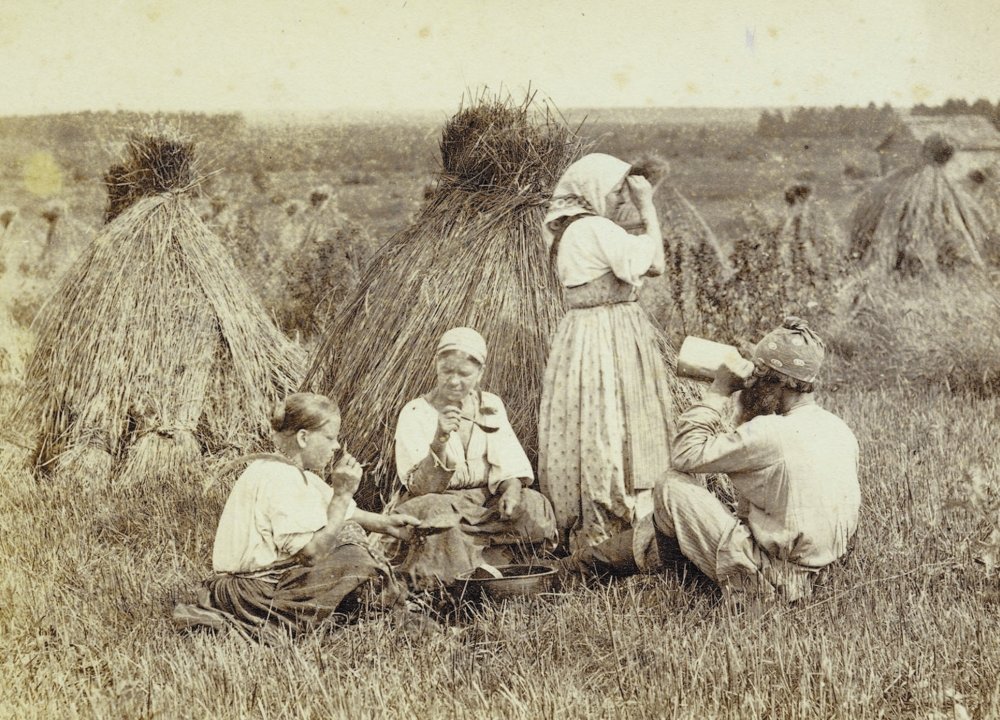
Achievements
He created the first experimental laboratory in Russia at his clinic, where analyzes were carried out, the effect of medicines on the body was studied, and observations were made on animals.
He was the first to suggest the infectious nature of catarrhal jaundice (epidemic hepatitis, Botkin's disease).
Established the infectious nature of hemorrhagic jaundice.
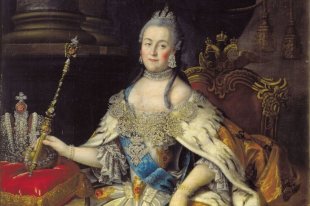
He was the first to suggest the specificity of the protein structure in various organs, developed the diagnosis and clinic of a drooping and "wandering" kidney.
In 1872, with the active participation of Botkin, women's medical courses were opened in St. Petersburg – the world's first higher medical school for women.
He laid the foundation for free home care, created the institute of school health doctors, insisted on the creation of an institute of "Duma" doctors.
Portrait
“Like all strong people, he was of a soft and accommodating disposition and, all absorbed in business, did not pay attention to everyday trifles, avoided quarrels and did not like idle disputes. All these peaceful qualities of him were especially pronounced in a home, family environment; here he was all wide open with his tenderly loving heart, with his inexhaustible good nature and gentle humor, and surrounded by his twelve children aged from 30 years to a one-year-old child (from his first marriage he had five sons and one daughter, and from the second – six daughters), introduced himself a true biblical patriarch; his children adored him, despite the fact that he knew how to maintain great discipline and blind obedience to himself in the family. ON THE. White-headed.
Memory
The Alexander Barracks Hospital in St. Petersburg was Botkin's favorite brainchild. Since 1882, he was the trustee of the hospital for the medical part, and since 1891 the hospital bears the name of Sergei Petrovich. Another one is named after him in Orel.
The most famous "Botkinskaya" is the S.P. Botkin – opened in 1910 in Moscow thanks to the industrialist and philanthropist Kozma Terentyevich Soldatenkov. He wanted Moscow to have "a free hospital for everyone without distinction of rank, class or religion" and bequeathed 2 million rubles for the construction. This year marks the 100th anniversary of the day when the Moscow Council of People's Deputies decided to rename the Soldatenkovskaya Hospital to the S.P. Botkin.
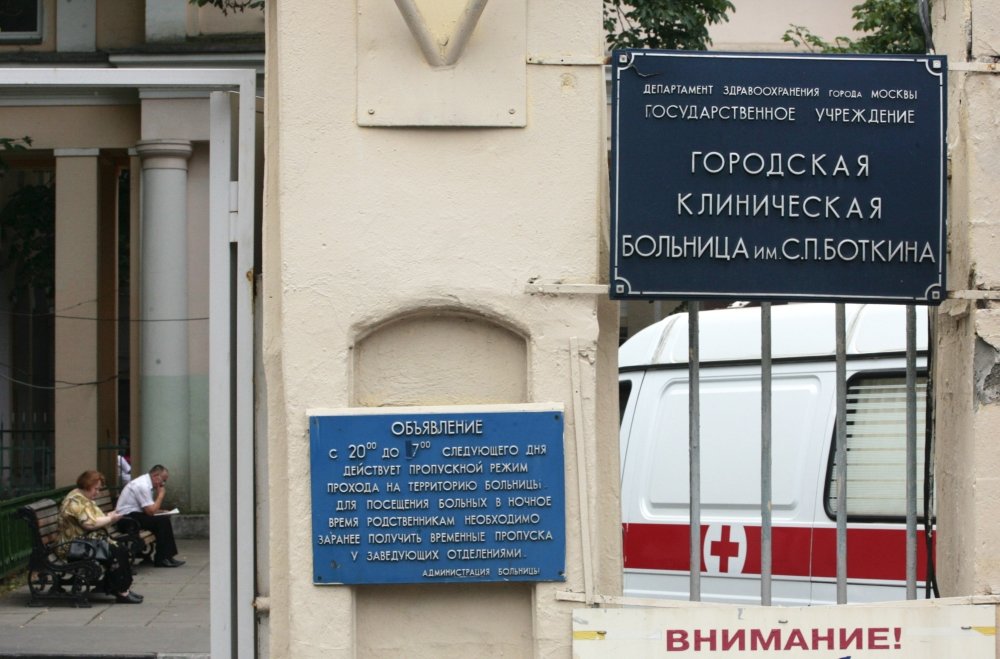
Detail
Of the five sons of Sergey Petrovich, three went in the footsteps of the Father. The younger, Eugene, was Life Medica at the court of Nicholas II. At his own will, Evgeny Botkin proceeded to refer to the tsarist couple, together with which on the night of July 16, 1918 he was shot. Canonized and recognized by the Holy Russian Orthodox Church.
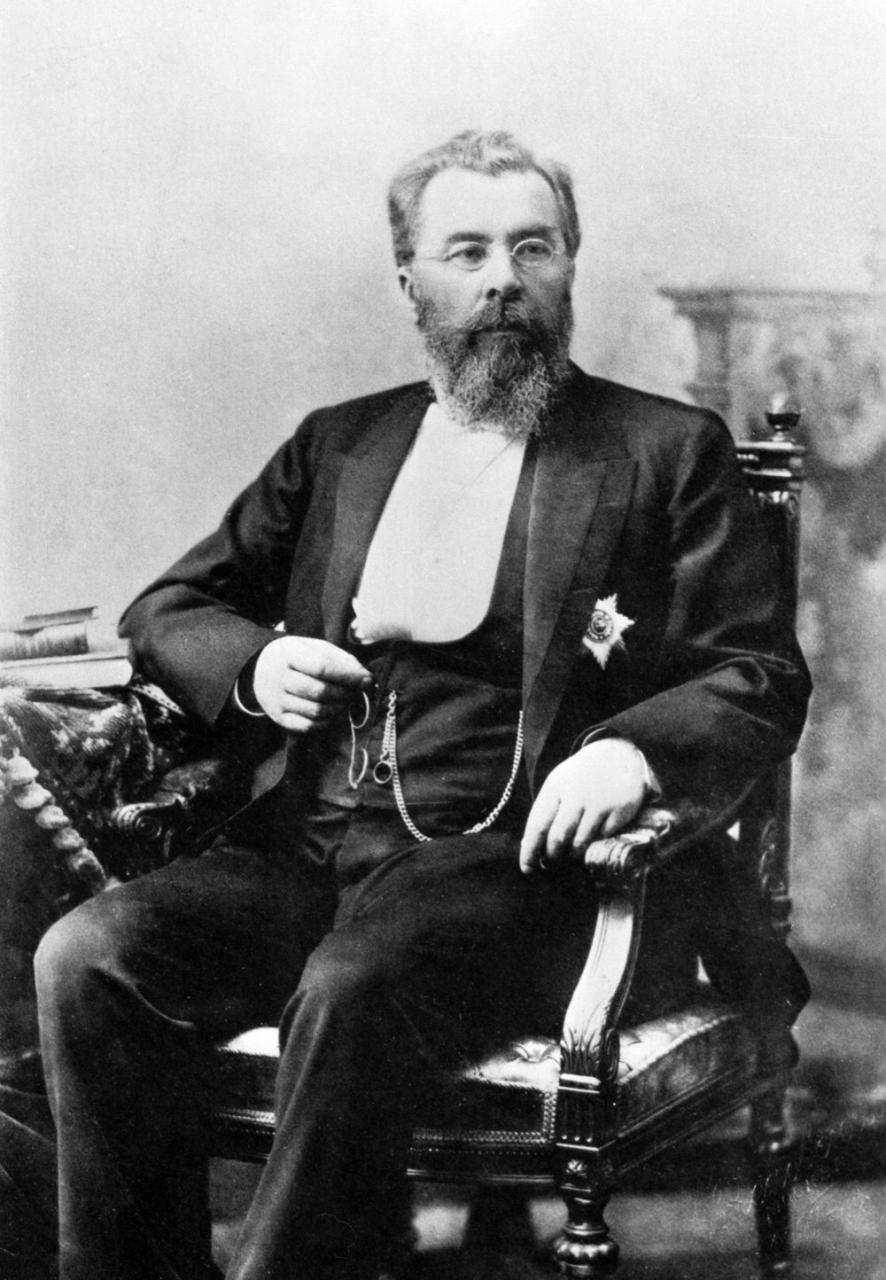
Nikolai Vasilyevich Sklifosovsky
Years of life: 1836-1904
Medical specialty: Surgery
Studies
Born on the farm near the city of Dubossara Kherson province and was a ninth child (only 12) in the family of a poor nobleman, writers of Vasily Pavlovich Sklifosovsky. Father's father to feed all the children was not able, so the younger, including Nikolai, sent to the Odessa House for orphans. Rescue for the boy was the doctrine: he was carried away by natural sciences, foreign languages, history and managed to finish Odessa gymnasium with a silver medal.
Thanks to the excellent certificate, Nikolai received benefits upon admission to Moscow University, where he became a student of the famous surgeon F.I. Inoshetseva
Career
Since 1859, he worked in Odessa by the alternator, and then the head of the surgical department. Intected in Europe, where in 1866 voluntarily went to the Austro-Prussian war. For brilliant work on dressing points and in Lazareta was awarded the Iron Prussian Cross. Subsequently, she went to the front three times, saving the wounded during Franco-Prussian (1870-1871), Serbian-Turkish (1876) and the Russian-Turkish (1877-1878) wars. During the war with the Turks in 1877, about 10 thousand wounded passed through Sklifosovsky's lazaret. To support the forces of the doctor, nurses, among whom was his wife Sophia Alexandrovna, between operations poured into the mouth of Sklifosovsky several sips of wine.
From 1880 to 1893, Professor Sklifosovsky was the Dean of the Medical Faculty of Moscow University, in 1893-1900 – Director of the Clinical Elenin Institute for the Improvement of Doctors and the Head of Surgical Office.
Achievements
Together with I.I. Nasili offered a new way of connecting long tubular bones with false joints, which was called "Sklifosovsky Castle" or "Russian Castle".
Protected the development of abdominal surgery in Russia. One of the first to produce laparotomy (autopsy of the abdominal cavity).
It is considered one of the pioneers of gynecological operations, operations on the stomach and the bustling bubble.
Methods of antiseptics and aseptics were widely promoted and both methods in surgical practice introduced one of Russia.
One of the first to make an operation on excision of the stomach (Gastrostomy), the first in Russia applied "Butt Murphy" (intestinal seam).
He became one of the hedgeons of domestic military field surgery.
Detail
Sklifosovsky retained the life of thousands of unfamiliar people, but the relatives could not save – death pursued his family on the heels. The first wife Lisa, who gave Nicholas three children, died at the age of 24 from Typha.Boris, the first-born from his second marriage, died in infancy, his son Konstantin died at the age of 17 due to kidney tuberculosis, and Vladimir committed suicide.
Already after the death of Nikolai Vasilyevich, his son Nikolai was killed in the Russo-Japanese War, Alexander went missing on the Civil fronts. And in 1919, the anarchists-Bibikovites broke into the estate of Sklifosovsky and brutally dealt with the widow of the great surgeon and his daughter Tamara.
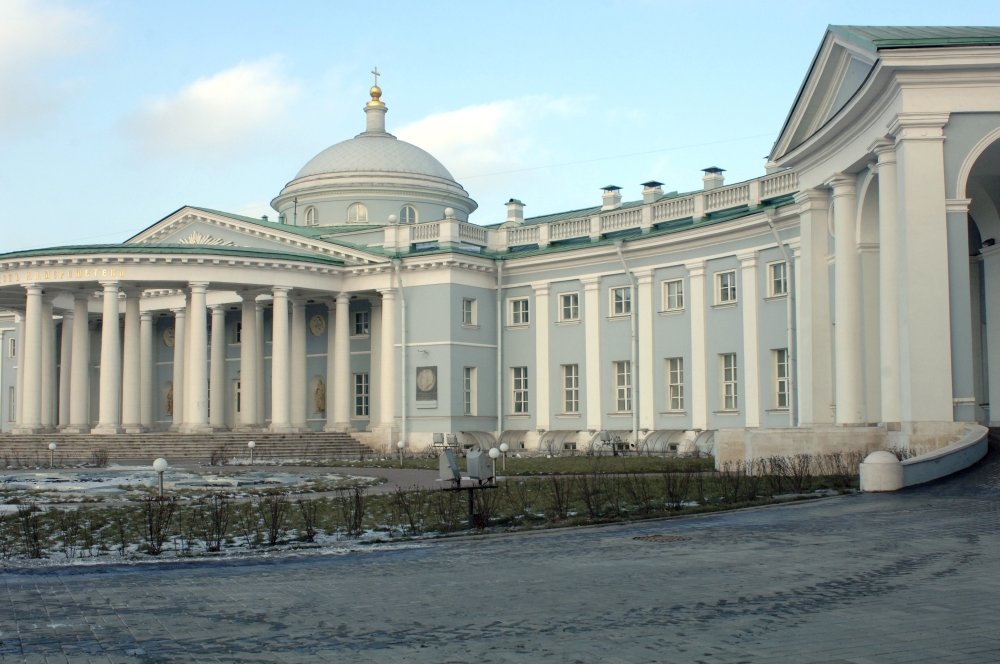
Memory
In 1979, the name of N.V. Sklifosovsky was given to the Poltava Regional Clinical Hospital, in front of the main entrance of which a monument to the outstanding surgeon was erected. And the world-famous "Sklif" – the N.V. Sklifosovsky – was opened in 1810 in Moscow.
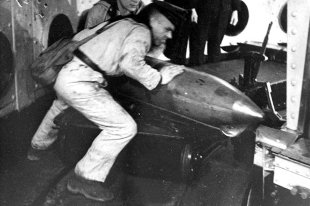
This magnificent building, which housed a hospital for the poor, the homeless and the crippled, was erected by Count Nikolai Petrovich Sheremetev in memory of his wife Praskovya Zhemchugova. The ensemble of the Hospitable House (hospitably hosting wanderers) was included in the provisional list of UNESCO World Heritage Sites. In 1923, the Moscow Health Department organized on its basis the Institute of Emergency Care named after N.V. Sklifosovsky.
Portrait
"Sklifosovsky is an elegant, well-groomed general in an impeccably clean tunic, who seems somewhat stern and proud at the first meeting, but in fact is surprisingly soft, affectionate, benevolent, even somewhat sentimental man." M. Shoyfet, "100 Great Doctors".
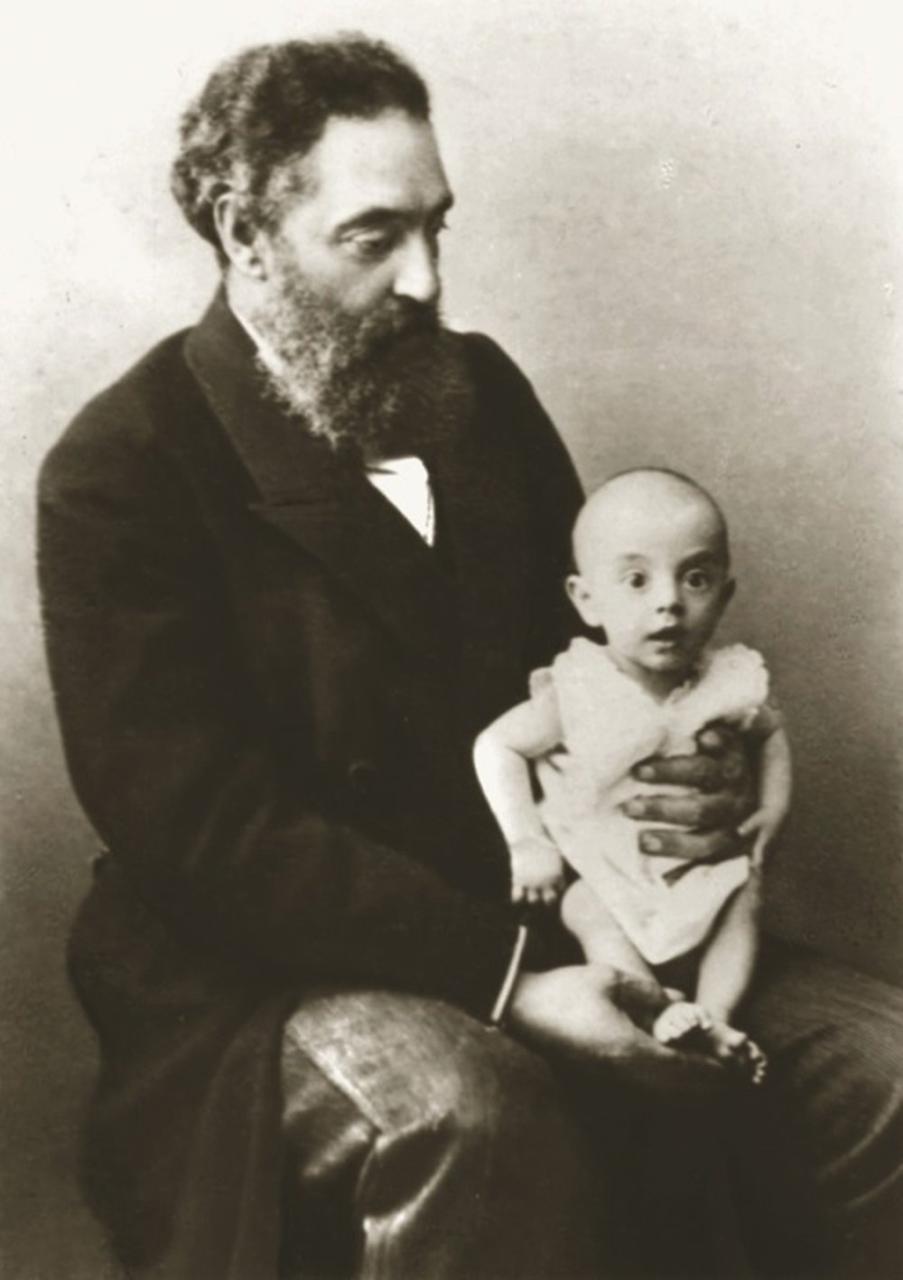
Nil Fyodorovich FILATOV
Years of life: 1847-1902
Medical specialty: pediatrics
Studies
Born in the village of Mikhailovka, Saransky district, Penza province, in the family of a retired captain. In 1864 he graduated from the Penza Noble Institute and entered the medical faculty of the Imperial Moscow University, after which in 1869 he received a position as a zemstvo doctor in his native Saransk district.
Career
Filatov was in charge of 58,000 souls – excluding wives and a huge number of children, who were the main patients of the county doctor. Extensive pediatric practice, as well as a personal tragedy – two of the five children of Nil Fedorovich died of diphtheria – predetermined his keen interest in childhood diseases.
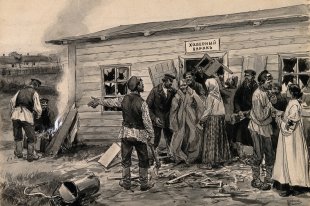
After two years of work in the county, Filatov went on an internship in Europe, upon his return he defended his dissertation and received a doctorate in medicine. In 1877, he was accepted as a Privatdozent at his alma mater at the Department of Obstetrics, Women's and Children's Diseases, and in 1891, Professor Filatov headed both the department and the children's clinic set up with it. But above all, Nil Fedorovich was a practicing doctor, whom all of Moscow knew and loved – he treated children of all walks of life.
Filatov gave half his life to the children's hospital on Malaya Bronnaya, which half a century later would be named after him. There he gave lectures, held open rounds and consultations, and gained all-Russian fame as a "children's friend."
Achievements
All Russian pediatrics "came out of Filatov's white coat."
He described a number of childhood diseases – scarlet fever, infectious mononucleosis, masked malaria of infants, protracted and fever-free forms of influenza, chicken pox – as independent diseases.
He was the first to introduce serum treatment of diphtheria.
Filatov's "Semiotics and Diagnosis of Childhood Diseases" (1893) went through nine, and "A Brief Textbook of Childhood Diseases" (1893) – 12 editions, these works have been translated into all European languages.
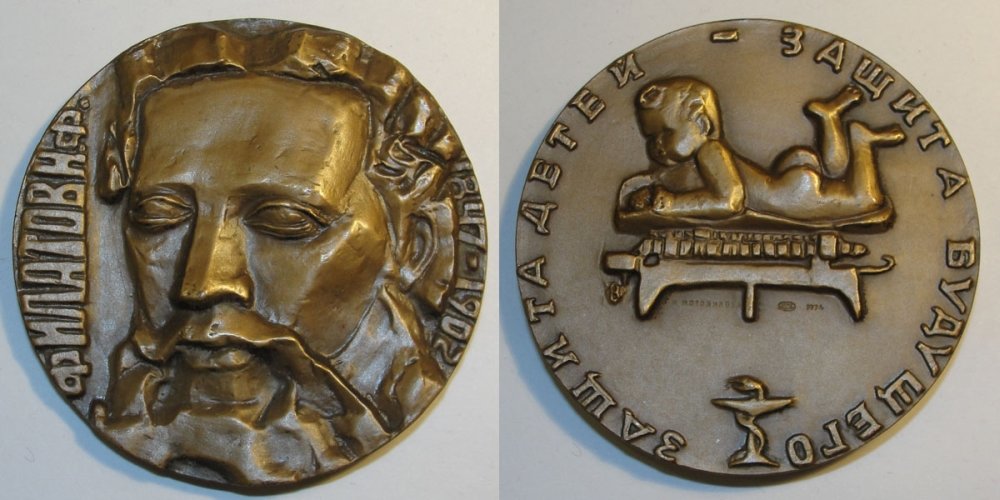
Portrait
“During the intermissions between lectures in the smoking room and the corridors of the old clinics on Rozhdestvenka, I met a gloomy, tall, swarthy brunette with a cap of curly hair on his head, giving him a non-Russian type, always in a hurry, untalkative, uncommunicative young man Filatov. How surprised I was when I met him in the family circle of a young doctor as a cheerful conversationalist and wit, good-natured, contagiously laughing with that purely childish, unconstrained laughter that people with an open soul and a calm conscience can laugh with, with his expressive large black eyes, shining with infinite warmth. then a bewitching impression. N.V. Yablokov, Director of the Sofia Children's Hospital
Memory
The name of Filatov is the Moscow Children's City Clinical Hospital N 13, St. Petersburg Children's Clinical Hospital N 5 – the heir to the oldest in Russia, the Imperial Nikolaev Children's Hospital, opened on December 31, 1834, the Penza Regional Children's Clinical Hospital.
And the most famous – the Children's City Clinical Hospital N 13 named after N.F. Filatov – was opened on December 6, 1842 on Malaya Bronnaya, in the estate of A.N. Neklyudova. The hospital was designed for 100 beds, there was an outpatient clinic. Since 1846, classes for medical students have been held at the hospital. Over forty years, over 40,000 children have been treated in it and about 600,000 outpatient appointments have been made.
A fire in 1883 destroyed the hospital, and 12 years later the hospital moved to Sadovaya-Kudrinskaya Street. A three-story building with spacious wards, a separate surgical building, a dissecting room, a mortuary, an outpatient clinic, and a church were built there. The new hospital was equipped with its own power plant and steam mechanical laundry. Donor Prince A.A. Shcherbatov wished that the hospital was named Sofiyskaya in honor of his late mother.
Since 1922, the Sofia Hospital has been named after N. F. Filatov. Filatovka is an advanced children's clinic in everything. In 1930, on its basis, the world's first faculty for the protection of motherhood and childhood was created – the future faculty of pediatrics of the Second Medical Institute. In 1961, the first emergency room was opened at the hospital, a year later, the first neonatal pathology department in the USSR, and in 1980, the first one-day surgical hospital in the Soviet Union.

Detail
Of the six brothers of Nil Fedorovich, four became doctors: Fedor and Nikolai – zemstvo doctors, Abram – an obstetrician-gynecologist, Peter – an outstanding eye surgeon and father of Vladimir Petrovich Filatov, a great ophthalmologist.Field relative was a colleague Nile Fedorovich in the medical faculty Ivan Mikhailovich Sechenov.
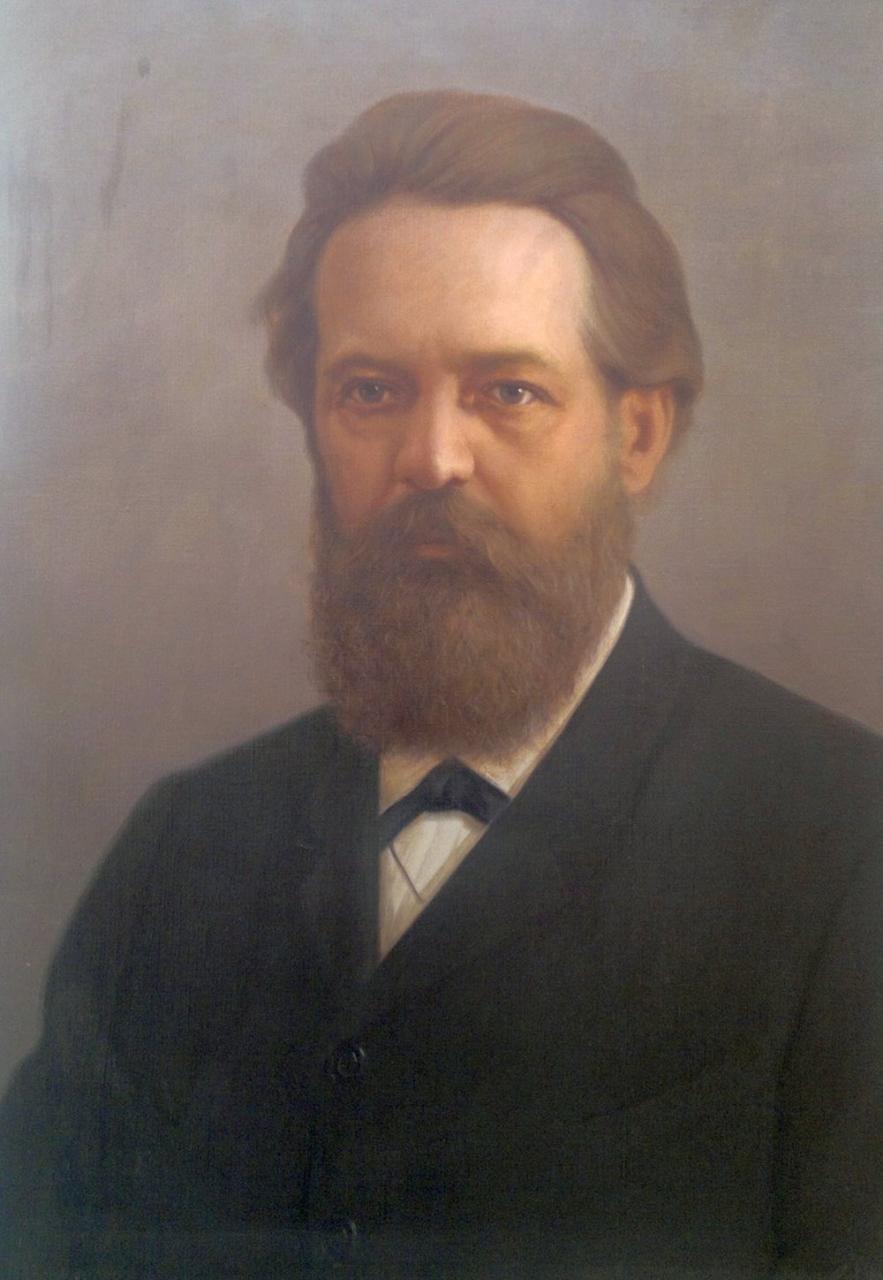
Peter Petrovich Kashchenko
Years of life: 1859-1920
Medical specialty: psychiatry
Studies
The first of the eight children in the family of Tambov military doctor Peter Fedorovich Kashchenko. In childhood, Peter studied anatomical atlases and already by 14 years could quite professionally provide first help. Father died when Peter was only 16 years old, and the eldest son became the main support for the mother. In 1876, he entered the medical faculty of Kiev University of St. Vladimir, but soon because of the material difficulties was forced to move to Moscow.

At the University of Kaschenko participated in the activities of the revolutionary mug and two months before the end of the fifth course during the student gathering, a fierce speech was delivered to the defense of radical methods of fighting the tsarism, refused to honor the memory of the King Alexander II killed by the terrorists. Soon after that, Kaschenko arrested, excluded from the university and sent under the convoy to the link to Stavropol Caucasian.
Practicing Medicine Kaschenko was banned, and he had to change the occupation: he began to teach music and singing in the Stavropol women's gymnasium, the benefit had an excellent hearing. To finish the formation of Peter allowed only four years later, already in the University of Kazan. Under the influence of prominent doctors-psychotherapists L.F. Ragozina and V.M. Bekhtereva who worked at the time in Kazan, Kashchenko chose a psychiatry as a specialization.
Career
Fruitfully worked out by the alternator in the first psychiatric hospital-colony in the country in the village of Buraso, in 1889, Kashchenko received the position of head of the psychiatric hospital in Nizhny Novgorod province. There, and later in the Alekseevsky Psychiatric Hospital (1904-1907) and in the Sivoritskaya hospital (1909-1918), Peter Petrovich showed himself a genuine innovator.
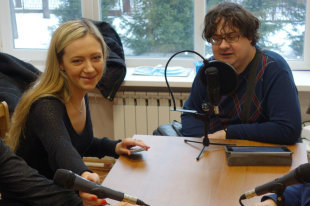
Kaschenko developed the principles of "non-followed" and humane content of mentally ill, trying to create for patients as comfortable conditions as possible: canceled the grilles on the hospital windows, introduced a new type of personnel – from now on, the Sanitars were also educators, they were called "units" and "nyanka". The main rule is no chains and belts, no violence. Cashchenko preferred to the strain shirts of Kashchenko, the formulation of amateur patients, chess, gymnastics and tea drinking with samovar and bagels. Peter Petrovich personally led the hospital ensemble and choir.
The most progressive form of psychiatric assistance Kaschenko considered the patronage: patients who did not imagine the danger to others, settled in the families of the peasants who took care of them and received fee from the state.

Achievements
Implemented a fundamentally new service system of mentally ill, based on humanistic principles and included a wide system of nonsense.Applicated a number of progressive ideas in the treatment of mental illnesses, combining medicines with labor and art therapy.
The first in Russia created a "phased psychiatric care system", included: a) a psychiatric hospital for patients with acute states (in Nizhny Novgorod); b) hospital-colony for patients with protracted disorders (p. Lyakhovo); c) Family patronage for recovering and chronic patients (Balakhna, p. Cubanevo).
He founded the first central statistical bureau in the country to take into account mental patients.
Detail
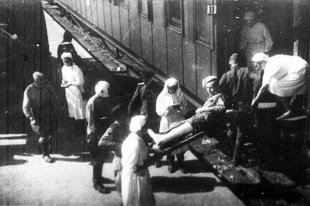
In the first Russian revolution, Kashchenko created volatile medical brigades, which assisted in wounded revolutionary during an uprising in Moscow, and after he helped his participants hide from persecution.
Memory
The name Kaschenko is wears the St. Petersburg City Psychiatric Hospital N 1, which he founded in 1909 in the former estate of Demidov Sivorites. And the most famous – founded in 1894 psychiatric clinical hospital N 1. ON THE. Alekseeva (Katchachikova Cottage) – Went a name p.p. Kashchenko from 1922 to 1994. Thus, the Soviet government decided to perpetuate the memory of one of the leading psychiatrists of the country, which was headed by the Department of Psychoneurology in the USSR drug addresses.
In 1994, the hospital returned the name of the urban head of Nikolai Alekseeva. It was Alekseev who gathered money for the construction of a hospital on the site of the former dacha of the merchant Katchachikov, but he did not survive it before her discovery. In 1893, he was fatally injured in the stomach man who was reported shortly before that from a mental hospital.
Portrait
Historian Psychiatry Yu.V. Cannabih characterized Kaschenko as "almost a brilliant organizer and a huge scale of a community doctor."
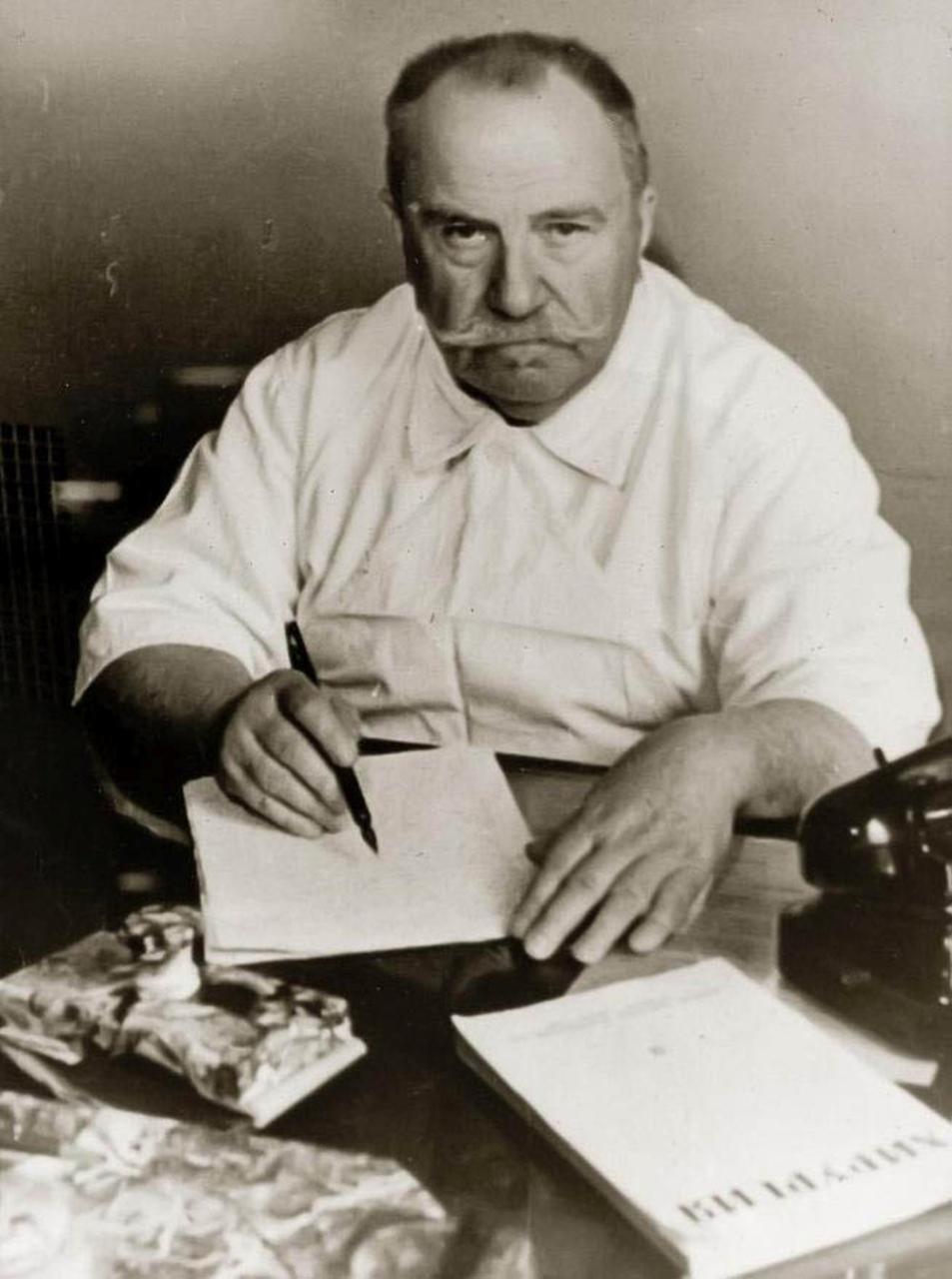
Alexander Vasilyevich Vishnevsky
Years of life: 1874-1948
Medical specialty: surgery
Studies
Born in the Dagestan village of Novoaleksandrovka in the family of headquarters of the infantry regiment. After graduating from the Astrakhan gymnasium, he entered the medical faculty of Kazan University, which in 1899 finished with honors. In 1903 he received a degree of doctor of medicine.
Career
At the end of the university, he remained a prosector at the Department of Surgery, he worked in the Kazan hospital, and after defending the thesis was adopted at the medical faculty of Privat-Associty. Thirty years later he taught surgery at the university, she worked as a scientific work and had extensive practice in Kazan hospitals: since 1918 he was heading the regional hospital in the Tatar ASSR, from the 1926th – faculty surgical clinic.
In 1934, the already well-known scientist and practitioner Vishnevsky was headed by the Moscow Surgical Clinic of the Central Institute for Improvement of Doctors and the All-Union Institute of Experimental Medicine. And in 1947, the 73-year-old Vishnevsky became the director of the Institute of Experimental and Clinical Surgery. After his death, the institute was led by Son – Alexander Alexandrovich Vishnevsky, the main surgeon of the Volkhovsky and Karelian fronts of the Great Patriotic War, subsequently – the main surgeon of the Soviet army.
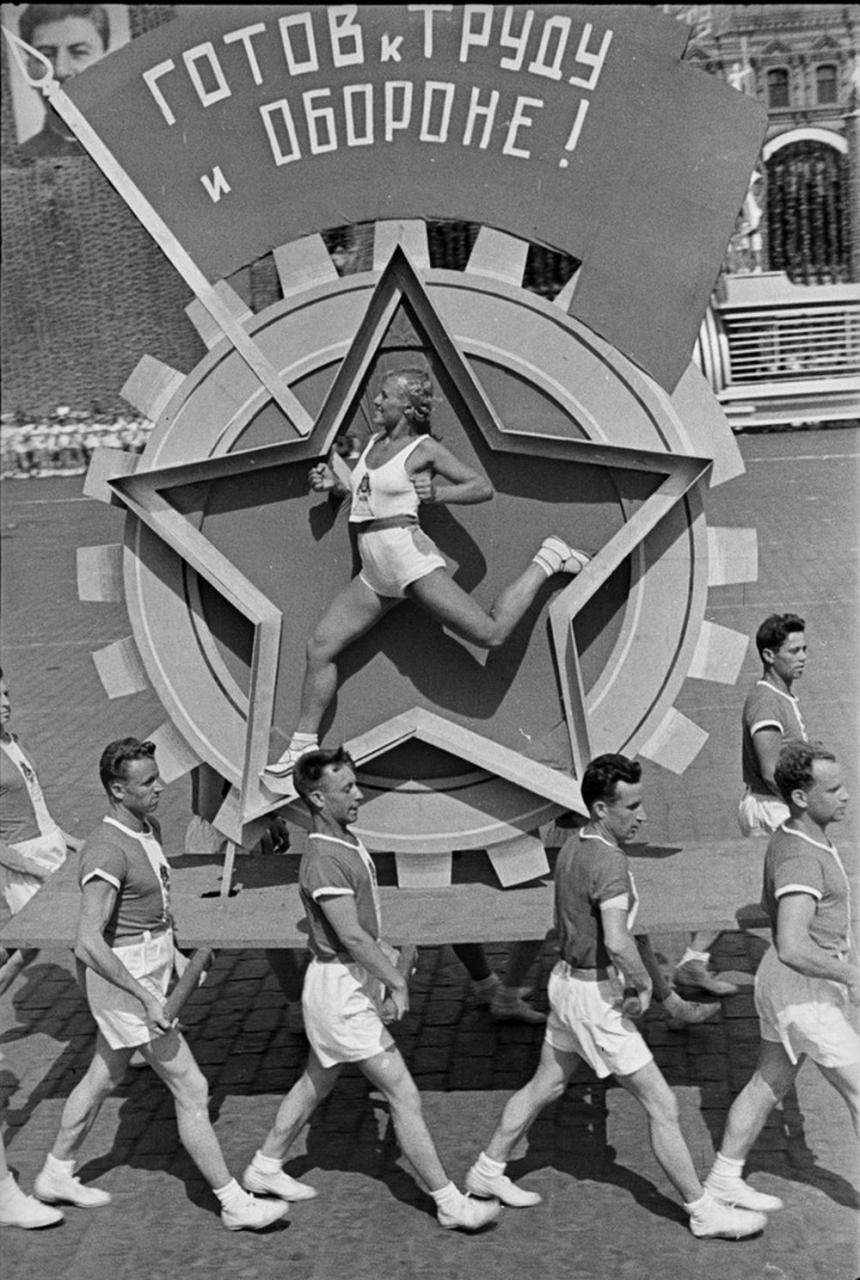
Achievements
He created new methods for the treatment of inflammation, purulent wounds, traumatic shock, which were widely used in the practice of Soviet surgeons.
Developed and implemented a new method of local anesthesia – "creeping infiltrate method".
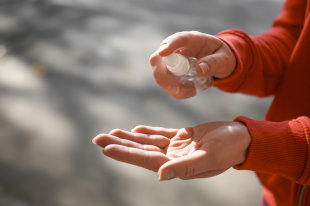
He was the first to use anti-inflammatory and analgesic novocaine blockades and disinfecting oil-balsamic dressings ("Vishnevsky's Triad"). Thanks to this, 70 percent of operations at the front were carried out under local anesthesia, which saved the lives of hundreds of thousands of wounded.
He created the popularly known healing "Vishnevsky ointment" ("balsamic liniment according to Vishnevsky"); "Even the smell of this ointment kills any infection!" – doctors and patients joked.
Portrait
"He was a great surgeon, a capable artist, a good athlete. And most importantly, a real man! And he had an imperious persuasive power, the power of a master of his craft." A.A. Vishnevsky
Detail
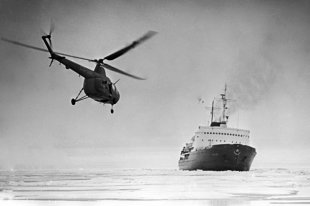
In August 1942, the 6th plenum of the Academic Medical Council of the Main Military Sanitary Directorate of the Red Army adopted a resolution on the use of novocaine blockade against A.V. Vishnevsky as the most accessible and effective method of dealing with shock. However, the chairman insisted on the name "Burdenko bloc". Thanks to the energetic protest of A.A. Vishnevsky-son, the method retained the name of its real creator.
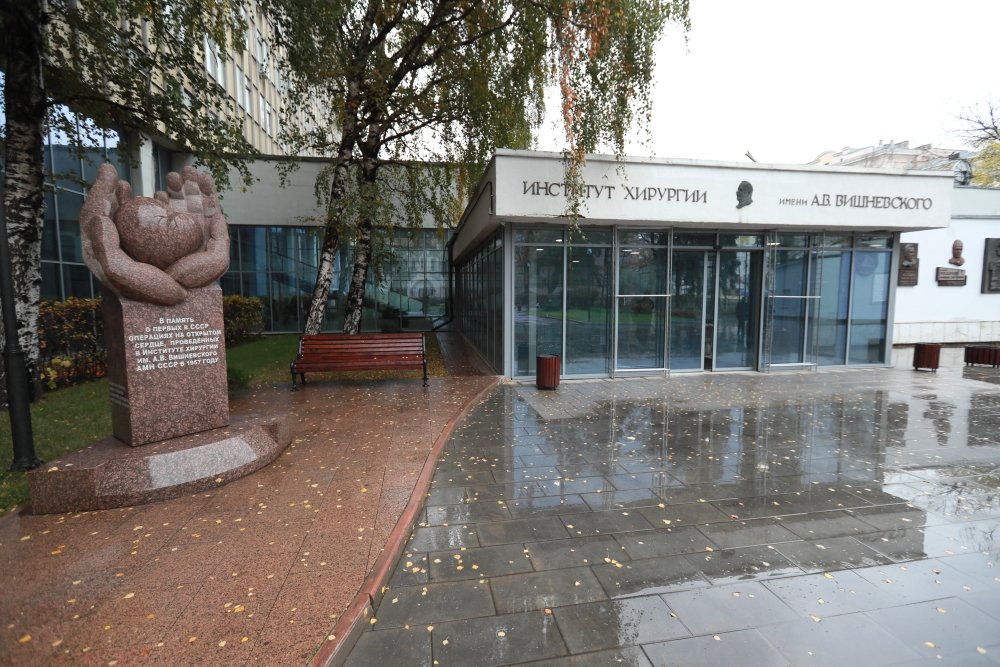
Memory
Vishnevsky's name is the National Medical Research Center for Surgery (in 1945 – 2018 – the Institute of Surgery) in Moscow, the clinic of the Kazan Medical University, the Krutinskaya Central District Hospital (Omsk Region).
In the place of the Center, a hospital town began to form in the middle of the 19th century. By 1917, the Alexander Hospital, Solodovnikovskaya, Guryevskaya and Tretyakovskaya almshouses operated here. After the October Revolution, the almshouses were abolished, and the premises were converted into a hospital named after N.A. Semashko. In 1936, it was transferred to the All-Union Institute of Experimental and Clinical Medicine named after A.M. Gorky. The surgical clinic of the institute was headed by A.V. Vishnevsky.
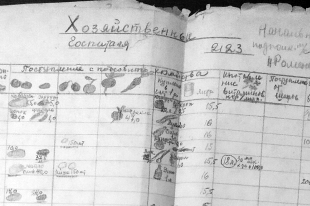
Here, in 1943, a specialized department was organized for patients with the consequences of gunshot wounds to the lungs. After the establishment of the Academy of Medical Sciences in 1944, the Institute of Surgery arose on the basis of the clinic. In 1948, after the death of Vishnevsky, the Institute was named after him.
In 1960, a burn department was opened here, which in 1967 received the status of the All-Union Burn Center. Even today, the most seriously ill patients from all regions are admitted here. Here, in 1976, the country's first specialized department of plastic surgery was opened for the rehabilitation of burned patients.
I hardly read entertaining books, surgery devastated me. Oh, how thirsty she is! Neither for the social sciences nor for art did I have a spare minute! I felt uneasy when people spoke to me about a novelty in literature or a new work of art.In desperation, I rushed to read anything, I was in a hurry to make up for lost time, but surgery sobered me up very quickly and returned me to my place.
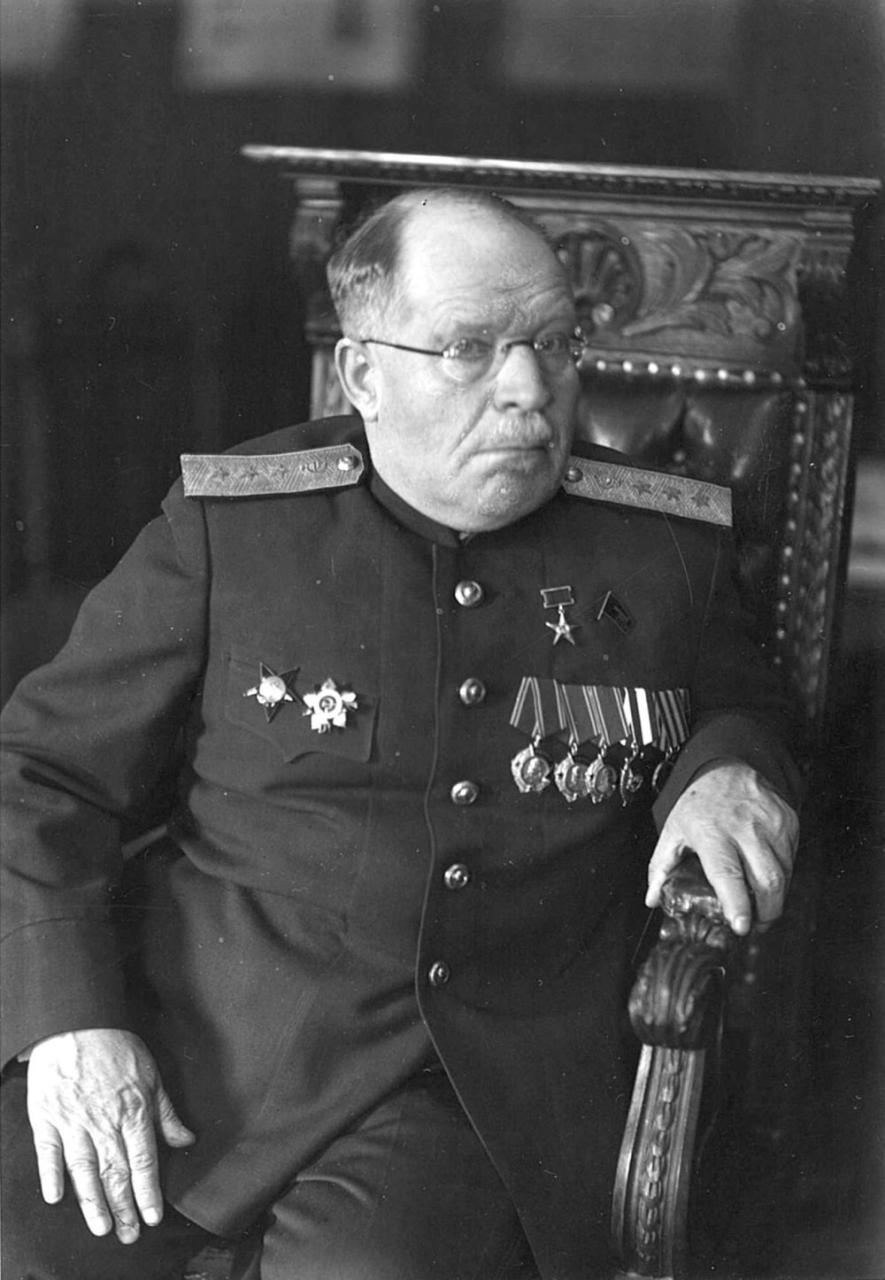
Nikolay Nilovich BURDENKO
Years of life: 1876-1946
Medical specialty: neurosurgery
Studies
Born in the village of Kamenka, Penza province, in the family of a clerk, he graduated from the Zemstvo school and the Penza Theological School. In 1897 he entered the medical faculty of Tomsk State University, but two years later he was expelled for participating in student strikes.
In 1901 he entered Yuriev University, but the Russo-Japanese War forced the student to interrupt his studies again – he volunteered for a flying sanitary detachment.
In 1906 he received a diploma of a doctor, in 1909 – a doctor of medicine.
Career
He worked as a surgeon at the Penza Zemstvo Hospital, and after defending his doctorate, he received a position as an extraordinary professor at the Department of Surgery at Yuryev University. With the beginning of the First World War, he was an assistant to the head of the medical unit of the Red Cross under the armies of the North-Western Front. He organized the work of field surgeons, sorted and evacuated the wounded, operated a lot. In the summer of 1917 he was shell-shocked and returned to Yuryev University.
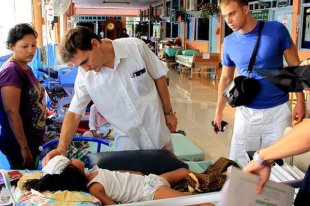
In 1923, he opened the neurosurgical department of the faculty clinic at Moscow University, and in 1929, the department of military field surgery. In 1932, at the initiative of Burdenko, the world's first neurosurgical institute was established. He met the Soviet-Finnish war as the chief surgeon-consultant at the sanitary department of the Red Army, and the Great Patriotic War – as the chief surgeon. He performed thousands of operations in the hospitals of Leningrad, Pskov, Smolensk, but the shell shock and the stroke that followed in September 1941 forced him to leave the front line.
Burdenko supervised the work of military doctors from Moscow, periodically making trips to the front. In 1944, he headed the Academy of Medical Sciences established according to his plan. After the war, despite the second and third strokes, he continued to work.
Achievements
He founded the national school of neurosurgery.
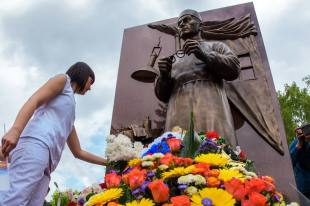
Developed methods for performing operations on the brain and spinal cord, treatment of oncology of the central and autonomic nervous system.
He created a coherent doctrine of the wound, developed instructions for the prevention and treatment of shock, purulent complications in case of a skull injury, and for the treatment of vascular injuries.
Introduced the use of antibiotics at the front.
Portrait
Strictly looking around, accompanied by the head of the hospital and a group of doctors, he ran up the stairs to the second floor to the intern's room, where new underwear and pajamas were prepared for him, for the professor never walked around the hospital in the clothes in which he was on In the room, Nikolai Nilovich took off his general uniform, put on all the hospital clothes and literally ran to the operating room, often, however, forgetting to take off his felt boots.Во время операции Николай Нилович часто сердился, бил ассистентов по рукам, доводя их иногда до слез, кричал: "Не ловите мух!" и т. д. Но оперировал он блестяще". Е.Г. Ландесман, хирург.
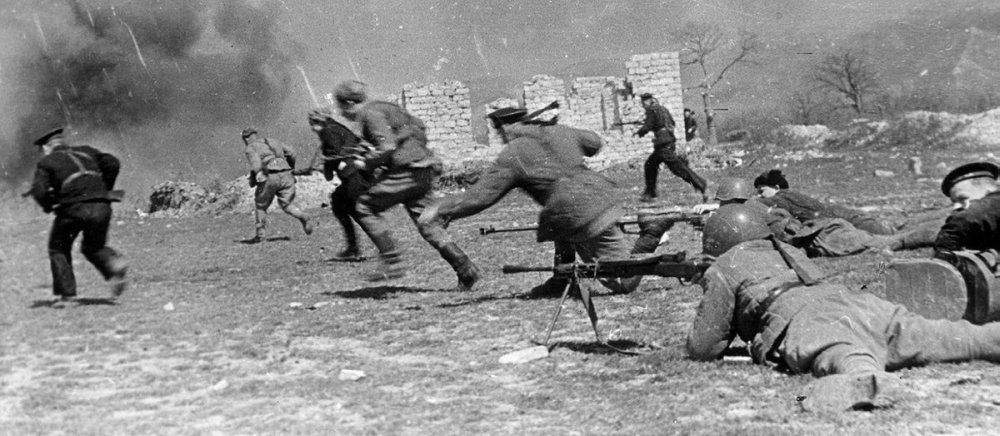
Detail
Главный хирург Красной армии Бурденко и главный хирург германской армии – основоположник торакальной хирургии Федринанд Зауэрбрух были друзьями со студенческих лет.
Memory
Имя Бурденко носят НИИ нейрохирургии, факультетская хирургическая клиника Медицинской академии и Главный военный клинический госпиталь в Москве, Пензенская областная клиническая больница и Воронежский государственный медицинский университет. А наиболее известный – Главный военный клинический госпиталь имени академика Н.Н. Бурденко – был открыт в Лефортово как первые в России госпиталь и медицинская школа для подготовки лекарей из "природных россиян" еще по указу Петра I в 1706 году. В 1797-м по указу Павла I здесь был построен главный корпус, дошедший до наших дней.
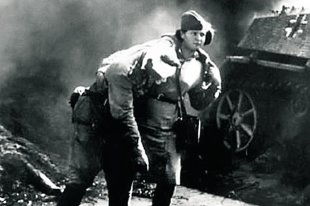
Раненых военный госпиталь принимает начиная с Русско-турецкой войны 1768-1774 годов.
В 1946 году госпиталю было присвоено имя академика Н.Н. Burdenko. Сегодня здесь работает одна из крупнейших в России станций заготовки и переливания крови и единственная в стране летающая операционно-реанимационная лаборатория "Скальпель".
Я провел всю свою жизнь среди бойцов. Несмотря на свою гражданскую одежду, я в душе боец. Я кровно связан с армией, я отдаю все силы армии и горжусь своей принадлежностью к ней. Мы, врачи, можем сохранить жизнь 97 процентам раненых. Мы надеемся, что смерть от раны явится исключением и останется смерть от несчастных случаев, и это то, о чем я мечтаю.
